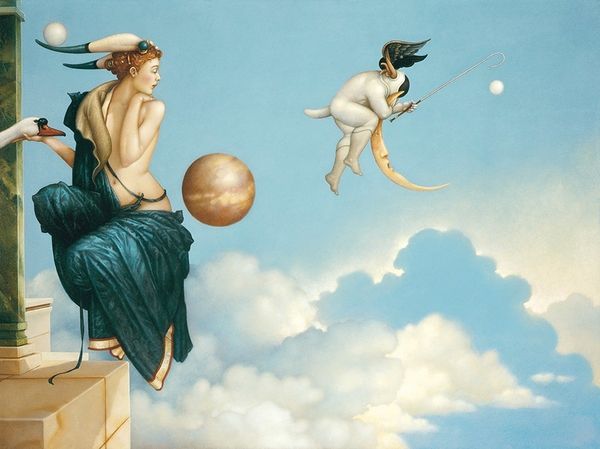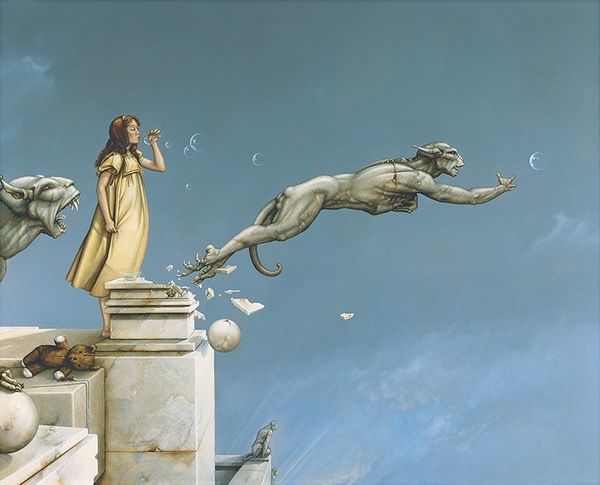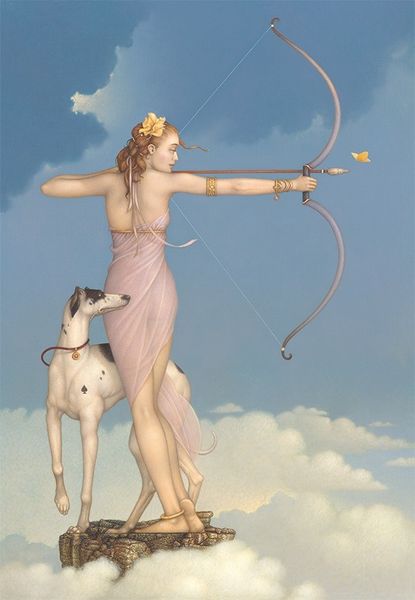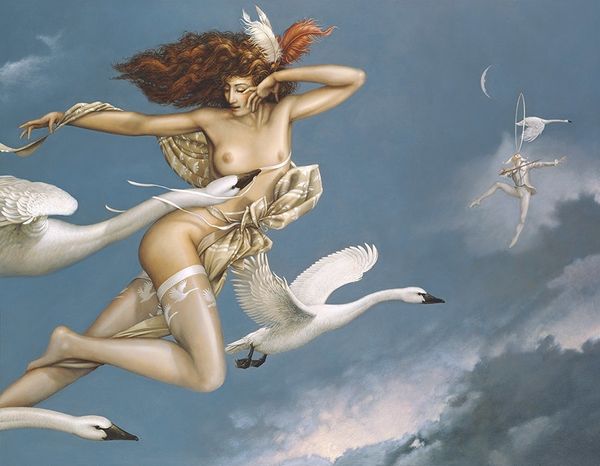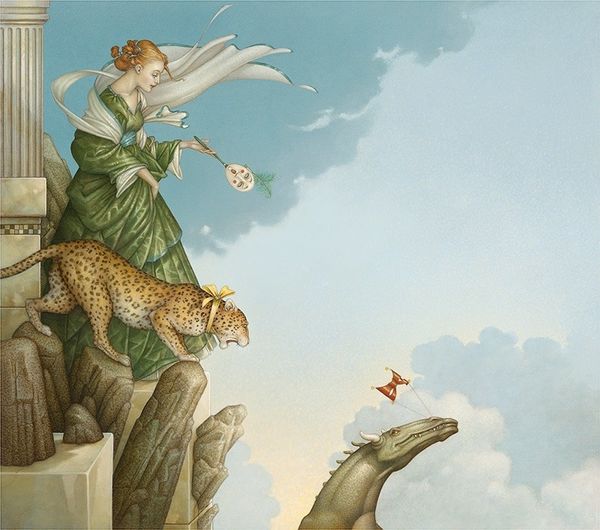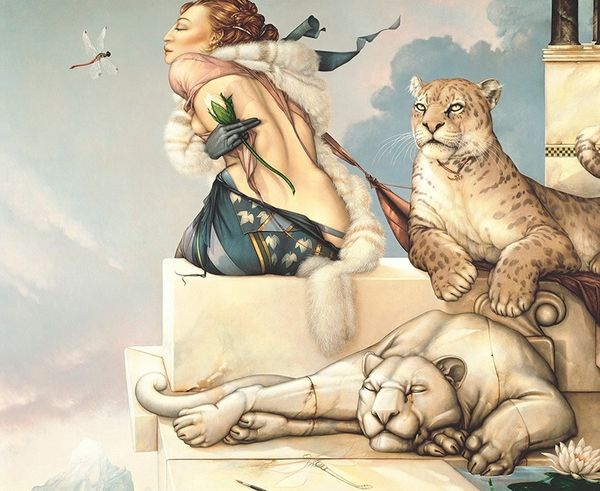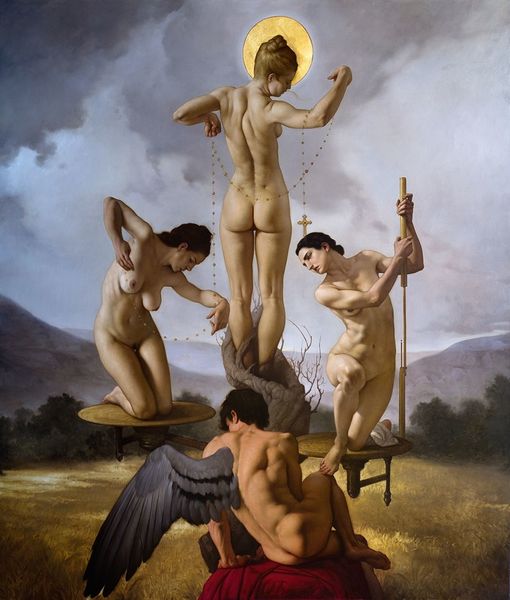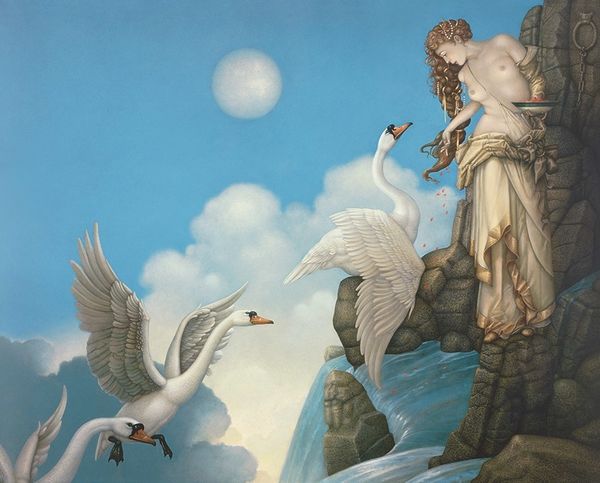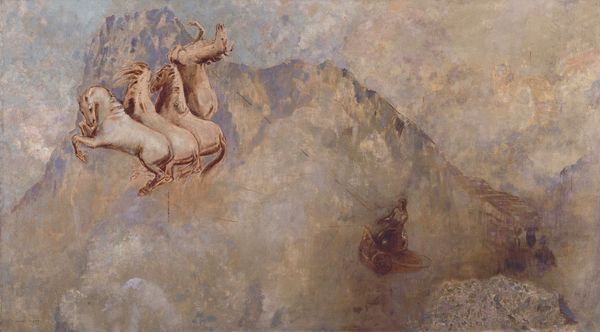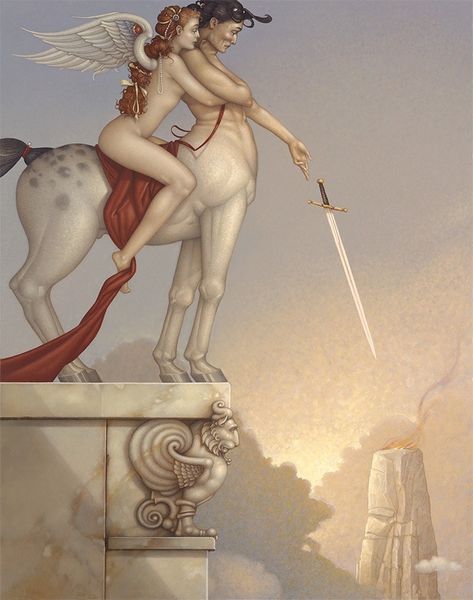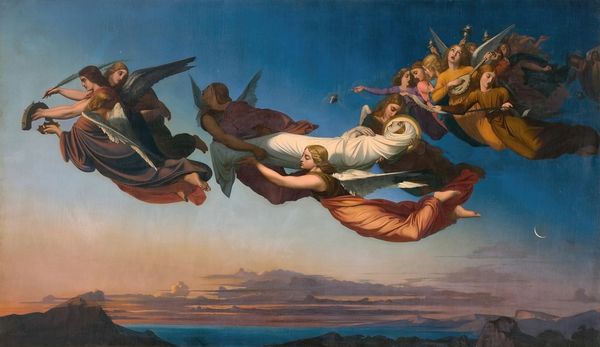
painting, oil-paint
#
allegory
#
fantasy art
#
painting
#
oil-paint
#
landscape
#
fantasy-art
#
figuration
#
romanticism
#
watercolor
Copyright: Modern Artists: Artvee
Curator: Welcome. Before us, we have Michael Parkes' painting, "Tuesday's Child." Note how the central ballerina, poised on a precarious rope-circle, compels our immediate visual interest. Editor: It feels airy and strange, almost unsettlingly so. The palette is soft, dreamlike, but there's something a bit theatrical about the whole construction. What's with the monkey and those other characters over there? Curator: Exactly! The painting utilizes a juxtaposition of realistic figures—consider the delicate modeling of the ballerina's form—against the bizarre iconography. Notice the rope-circle itself; its rough, tactile quality contrasts beautifully with the smoothness of her skin and tutu. Editor: I'm struck by the material presence of that rope. The painting, rendered, I believe, in oil paint, almost asks us to consider how those raw pigments were manipulated, layered, perhaps even mixed with various oils to achieve that subtle gradient of color and that particular texture. What were the artist’s work habits, one wonders? How was the rope-circle fashioned to serve as both the character's grounding element, but also a symbol for a dangerous trajectory through life? Curator: An intriguing question that draws out an appreciation for its allegory! Her poised stance invites interpretations around balance, grace, and perhaps the artist’s contemplation on a dancer's practice of movement and control. But that strange assembly watching her raises yet more questions about what is at stake. The woman holding doves feels almost like a Greek god giving or withholding favors. Editor: Right, and then the doves become something beyond pretty, fluttering birds. Are they a metaphor? Are they supposed to feel free, while the central figure doesn’t? How much labor, I wonder, to breed the doves in captivity or how the ropes, maybe spun to dangerous extremes and heights by women working looms in factories, are being employed for this aesthetic image, so far removed from their everyday usefulness. Curator: Precisely! By drawing out these tensions the artwork generates profound symbolic weight. The way Parkes merges Romantic and Fantasy styles allows viewers to participate actively in the generation of meaning. Editor: Agreed. It invites us to recognize the complex, often contradictory forces shaping our lives, symbolized through familiar material, such as the ballerina’s shoes, the animal figure's posture, or, again, that elemental length of rope. Curator: Indeed, “Tuesday’s Child” leaves us pondering the inherent contradictions of life. It compels the mind towards ever-new discoveries of the unexpected relationships between objects, labor, and artistry. Editor: Absolutely. It’s a delicate, evocative piece. We can almost intuit Parkes’ processes in material terms. Thank you for highlighting “Tuesday’s Child,” it's inspired us to imagine what labor lies at the foundation of a romantic pursuit.
Comments
No comments
Be the first to comment and join the conversation on the ultimate creative platform.
